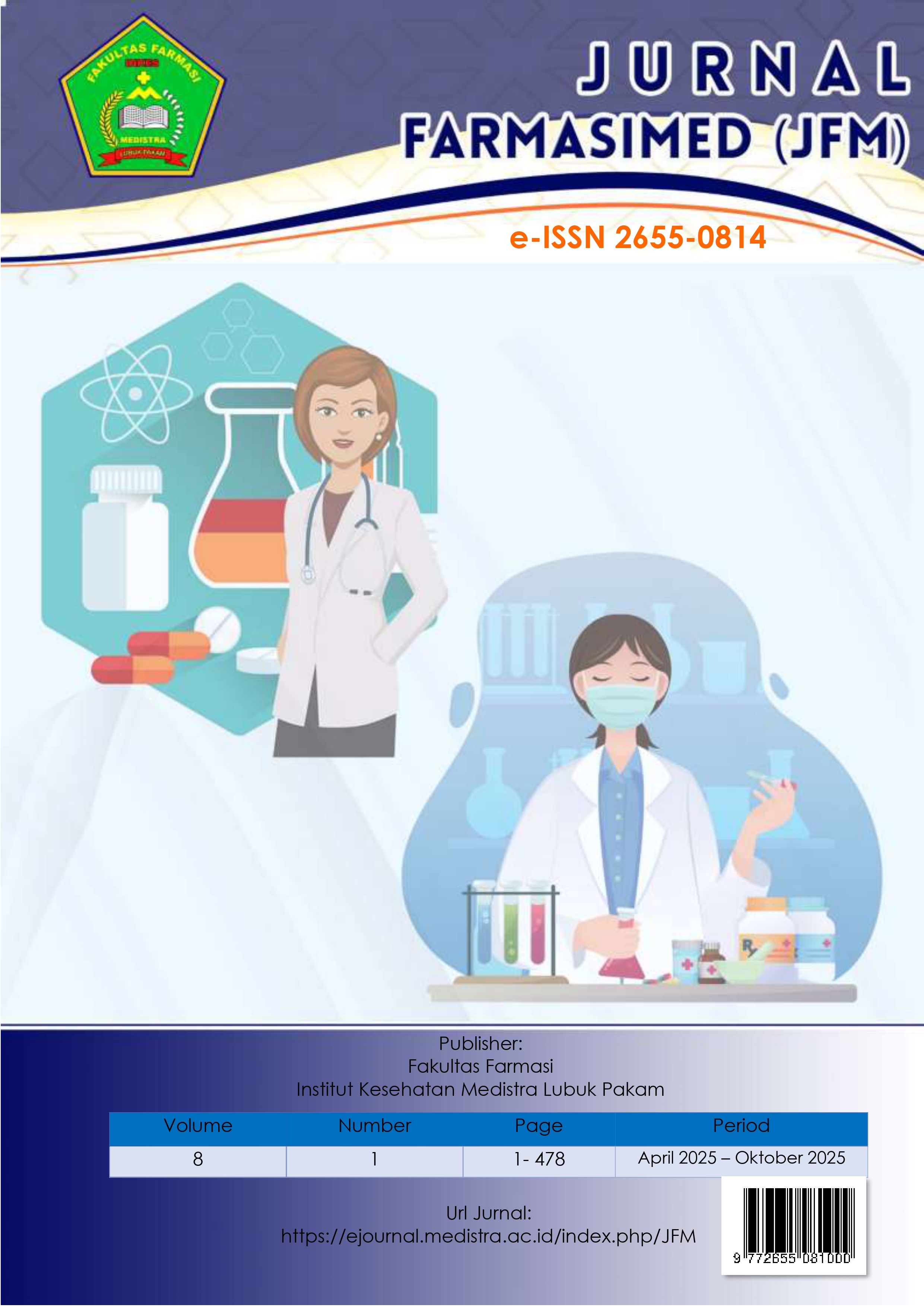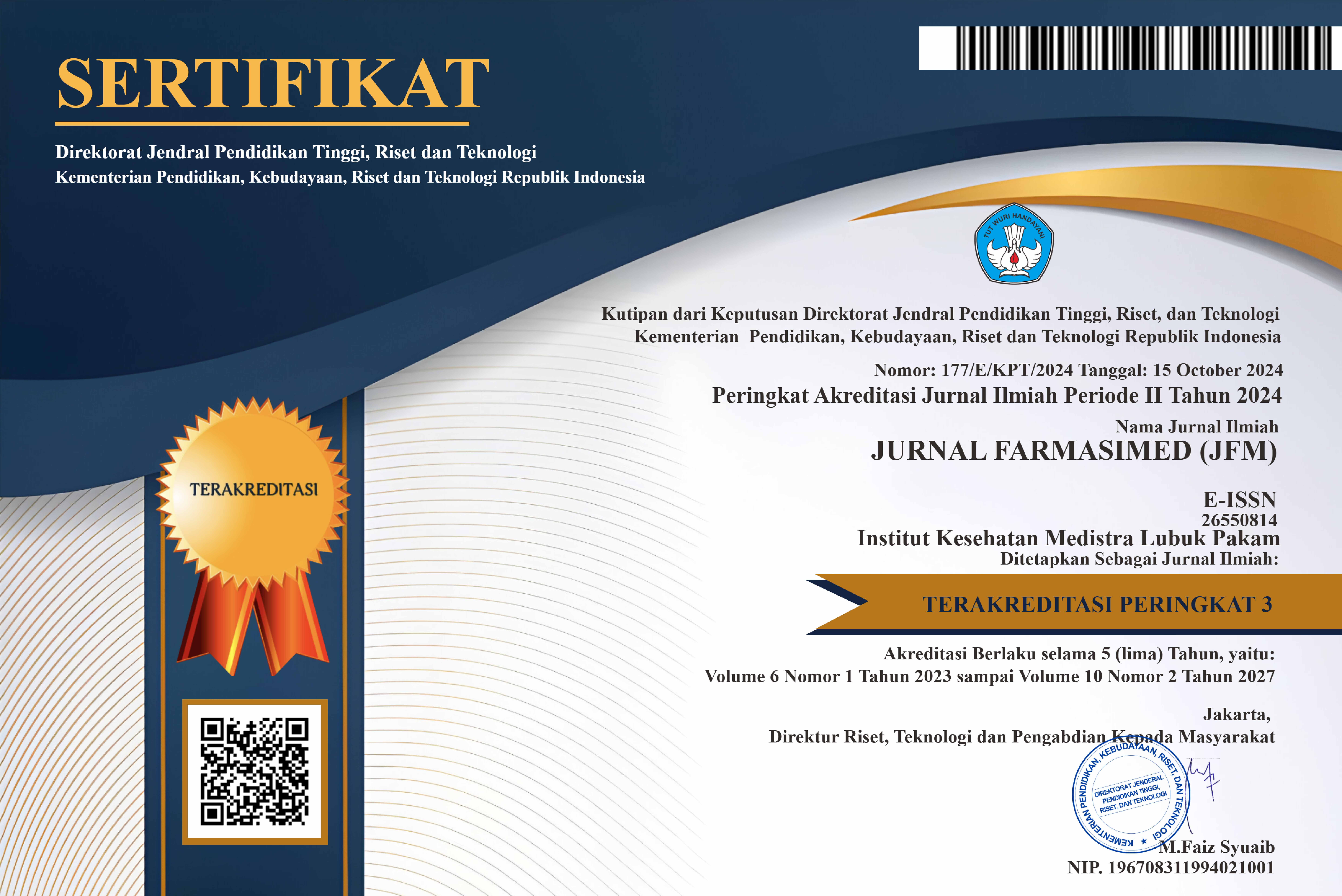Development and Method Validation of HPLC Method as an Key Method in the Analysis of Olopatadine HCl
DOI:
https://doi.org/10.35451/68pp3f94Keywords:
Olopatadine HCl, HPLC, Method validation, Accuracy, PrecisionAbstract
Olopatadine hydrochloride (HCl) is a widely used second-generation antihistamine, and its accurate quantification is critical to ensure product quality and therapeutic efficacy. Reliable analytical methods are therefore essential for regulatory compliance and routine quality control. This study aimed to develop and validate a simple and robust high-performance liquid chromatography (HPLC) method for the determination of olopatadine HCl in pharmaceutical samples. The method was validated in accordance with USP <1225>, AOAC, and ICH Q2(R1) guidelines, with evaluation of key parameters including linearity, accuracy, precision, selectivity, sensitivity, and system suitability. The validation outcomes confirmed that the method provided strong linearity across the tested range, acceptable recovery values, excellent repeatability, and sufficient sensitivity for low-level detection. Overall, the developed HPLC method proved to be accurate, precise, selective, and reliable. Its simplicity and cost-effectiveness make it particularly suitable for routine quality control of olopatadine HCl in research and pharmaceutical industry laboratories.
Downloads
References
[1] Mohan, S., Kumar, S., Kumar, G. P., Maheswari, A., Bhatia, A., & Sagar, A. (2023). Assessment of the efficacy of olopatadine 0.1% in the treatment of vernal keratoconjunctivitis in terms of clinical improvement based on total ocular symptom score and ocular surface disease index. Indian Journal of Ophthalmology, 71(5), 1822–1827. https://doi.org/10.4103/ijo.IJO_2048_22
[2] Tamura, T. (2012). Olopatadine ophthalmic solution suppresses substance P release in the conjunctivitis models. Asia Pacific Allergy, 2(2), 115–121. https://doi.org/10.5415/apallergy.2012.2.2.115
[3] Uchio, E. (2008). Treatment of allergic conjunctivitis with olopatadine hydrochloride eye drops. Clinical Ophthalmology (Auckland, N.Z.), 2(3), 525–531. https://doi.org/10.2147/opth.s3294
[4] E, M., A, N., GR, I., HB, D., A, V., D, W., & K, S. (2017). Pharmacokinetics and safety of olopatadine hydrochloride 0.77% in healthy subjects with asymptomatic eyes: Data from 2 independent clinical studies. Europe PMC, 11, 669–681. https://doi.org/10.2147/opth.s126690
[5] Gupta, M. K., Ghuge, A., Parab, M., Al-Refaei, Y., Khandare, A., Dand, N., & Waghmare, N. (2022). A comparative review on High-Performance Liquid Chromatography (HPLC), Ultra Performance Liquid Chromatography (UPLC) & High-Performance Thin Layer Chromatography (HPTLC) with current updates. Current Issues in Pharmacy and Medical Sciences, 35(4).
[6] Rele, R. V. (2015). Reversed phase high performance liquid chromatography method for determination of olopatadine hydrochloride from active pharmaceutical dosage form. Scholars Research Library, 7(1), 258–262.
[7] Masne, D. D., Jatte, K. P., Khachane, M. A., Chakole, R. D., & Charde, M. S. (2021). Degradation Profiling by RP- HPLC: A Review. International Journal Of Pharmacy & Pharmaceutical Research, 21(3), 273–298.
[8] Patel, M., Patel, D., Ahir, K., & Singh, S. (2019). A Review: Development and validation of HPLC method. Journal of Pharmaceutical Science And Bioscientific Research, 9(3), 173–182.
[9] Siska, F., & Maharani, A. (2023). Andaliman Quercetin (Zanthoxylum Acanthopodium Dc.) Using High Performance Liquid Chromatography (Hplc) Method And Its Antifungal Activity Against Pityrosporum Ovale. Jurnal Farmasimed (JFM), 6(1), 33–40. https://doi.org/10.35451/jfm.v6i1.1857
[10] Turnip, N. U. M. B., Anggraeni, R., Sihombing, Y. R., & Wulandari, S. (2025). Test to Determine The Quercetin Content of Tenggiang (Polystichum setiferum) Using the High Performance Liquid Chromatography (HPLC) Method and Its Antifungal Activity Against Pityrosporum ovale. Jurnal Farmasimed (JFM), 7(2), 135–142. https://doi.org/10.35451/jfm.v7i2.2361
[11] Handoyo, T. R. (2022). Validasi Dan Penetapan Kadar Senyawa Rutin Pada Ekstrak Etanol Daun Binahong (Anredera Cordifolia (Ten.) Steenis) Dengan Metode Kckt. Fitofarmaka: Jurnal Ilmiah Farmasi, 12(1), 1–13. https://doi.org/10.33751/jf.v12i1.3596
[12] EMEA. (2006). ICH Q2(R1) Validation of Analytical Procedures: Text and Methodology.
[13] EMEA. (2006). ICH Q2(R2) Guideline on validation of analytical procedures.
[14] US Pharmacopeial Convention. (2023). General Chapter <1225> Validation of compendial procedures (46th ed.). MD. US Pharmacopeial Convention.
[15] US Pharmacopeial Convention. (2022). General Chapter <621> Chromatography (46th ed.). MD. US Pharmacopeial Convention.
[16] Moosavi, S. M., Ghassabian, S., Moosavi, S. M., & Ghassabian, S. (2018). Linearity of Calibration Curves for Analytical Methods: A Review of Criteria for Assessment of Method Reliability. In Calibration and Validation of Analytical Methods—A Sampling of Current Approaches. IntechOpen. https://doi.org/10.5772/intechopen.72932
[17] AOAC. (2019). AOAC Guidelines for Single Laboratory validation of chemical methods for dietary supplements and botanicals appendix. K. Chemis.
Downloads
Published
Issue
Section
License
Copyright (c) 2025 Theodorus Rexa Handoyo, Violetta Djohansah, Windy Annisa Arbah

This work is licensed under a Creative Commons Attribution-NoDerivatives 4.0 International License.
Copyright in each article is the property of the Author.

























